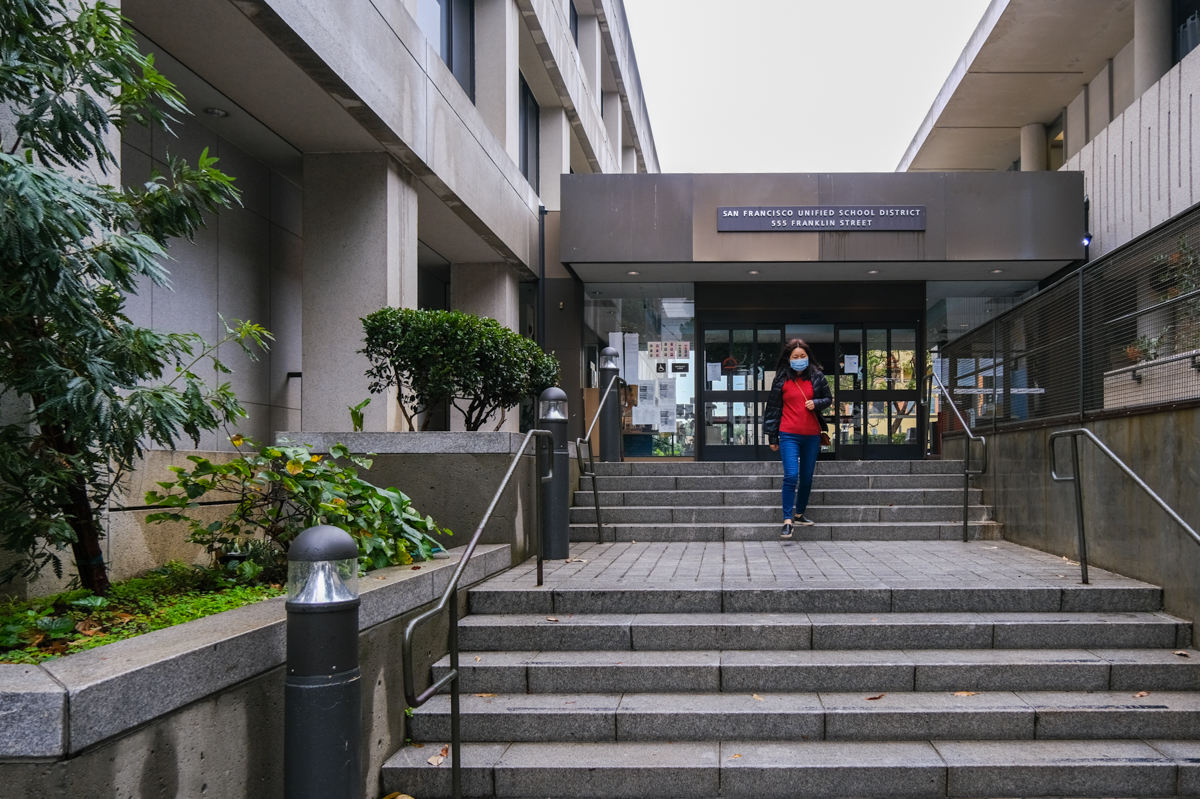Bond plans to upgrade buildings, outdoor learning investments, a student assignment system and a virtual academy—this week in the San Francisco Board of Education is a busy one.
Fortunately for those who want to watch it all but can’t make it in person, it appears that committee meetings are, once again, available to watch remotely. However, the board only accepts public comment during regular meetings like on Tuesdays.
Before Monday’s meeting, commissioners also met over the weekend to interview superintendent candidates; a pick is expected in May.
Here’s what you may have missed at Monday’s Buildings and Grounds committee meeting and what’s next.
Bond, General Obligation Bond
SFUSD is delaying plans for San Franciscans to vote on a new general obligation bond to fund facilities upgrades, moving the ballot measure from this November to 2023. This, staff said, allows time to conduct an assessment, establish its 10-year capital plan, and have the Board of Education approve it so a measure can be placed on the ballot with enough time to rally around it.
In previous public comments, some warned that a new bond would be a tough sell to voters because of broken promises and a lack of transparency with the 2016 bond.
Until outcry over dilapidated conditions at Buena Vista Horace Mann K-8 Community School resurfaced in October, projects from 2016’s $744 million bond were not very well known. At the time, he Board of Education voted to reallocate $40 million for long-awaited renovations for the school, and $15 million for a new school in Mission Bay slated to open in 2025, $1 million for portable air cleaners and more. The funding came from indefinitely delaying funds for a $100 million arts center billed as part of the 2016 bond measure.
Custodial services
At 174 custodians to cover 7.6 million square feet once those school doors are closed, SFUSD’s custodial staff is understaffed. District staff said there are another 123 custodians on the day shift but can’t fully clean while school is in session.
With the district’s current staff, one custodian typically cleans 18 classrooms, six restrooms, two stairwells and common spaces like hallways, cafeterias, and locker rooms. This includes sweeping and mopping, emptying trash, restocking supplies, disinfecting high-touch surfaces like doorknobs, removing litter and cleaning equipment.
District staff estimated that 325 regular custodians are needed to maintain acceptable industry standards and would cost roughly $20 million before benefits. The fewer germs spread, the fewer teachers and—critically, in terms of funding—students are out sick.
The district has enacted several cost-saving measures. The custodial team will move to prevent the waste of cleaning products, saving about 30 percent in costs. Since SFUSD is unlikely to hire enough staff to achieve the gold standard of cleaning, staff recommended doing a deep service analysis of aspects like enrollment so the team can be strategic around where to deploy the staff they do have. More zero-waste policies could also provide additional savings.
Though SFUSD has budgeted 310 full-time equivalent custodians for the upcoming year, each day leaves them short about 20 workers. Many have been in the district for more than a decade and are retiring or leaving the district faster than they can fill open positions, staff said.
The staff had some good news on Monday. The department has formally published cleaning standards and schedules for workers, offered professional development trainings, ensured computer access for custodial staff, is transitioning to safer Green-certified cleaning products, and offered pathways to bring more people into the career.
Brush with nature
Pandemic-fatigued parents began to rally around outdoor learning to get kids back on campus. As part of the reallocation of bond funds last fall, the district set aside $14 million to invest in outdoor spaces for learning. Chief Facilities Officer Dawn Kamalanathan on Monday presented initial findings on ideas solicited through a workshop earlier this month.
Feedback found preferences for flexible, interactive spaces specific to the age group and can accommodate outdoor instruction. Learning opportunities include pop-up classrooms, outdoor gatherings, nature play and shade—a must to keep students cool, Kamalanathan noted.
Kamalanathan added they are mindful of the benefits of interacting with nature. However, it’s unclear when these ideas may come to fruition, as the next steps would be to launch an application process and select projects.
